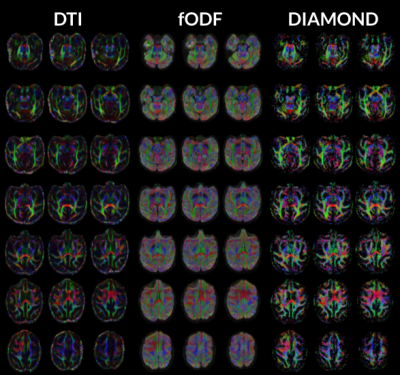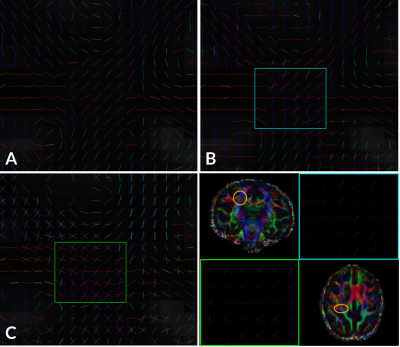Alex Colin Valcourt Caron1, Amir Shmuel2, Ilana R. Leppert2, and Maxime Descoteaux1
1Université de Sherbrooke, Sherbrooke, QC, Canada, 2Montreal Neurological Institute, McGill University, Montreal, QC, Canada
1Université de Sherbrooke, Sherbrooke, QC, Canada, 2Montreal Neurological Institute, McGill University, Montreal, QC, Canada
We propose a processing pipeline allowing for the analysis of diffusion data using DTI, CSD, and DIAMOND reconstruction, tailored for the analysis of data from the macaque brain. We present results obtained by applying the pipeline to a dataset acquired with a minimal CUSP 90 directions scheme.


